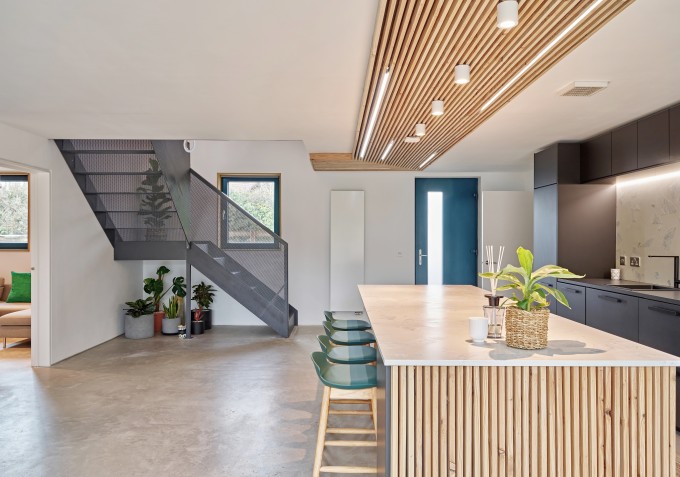Five self-build trends for 2023
As 2023 approaches, there’s a pervasive sense of renewed optimism. New Year’s resolutions to live a happier, healthier life are inescapable.
For wannabe self-builders looking to purchase a plot of land and construct their dream home there’s plenty to mull over. The year 2022 was filled with economic uncertainty and geopolitical tensions. This is very much still in the air and as we wade through the cost-of-living crisis, insulating and future-proofing our homes is high on the agenda.
Fear not, the good news is that there is a lot of opportunity for self-builders to create an energy efficient home. And it seems people’s enthusiasm for building their own home has not been affected by the cost-of-living crisis, according to a 2022 survey by the National Self Build and Renovation Centre. The survey of 644 would-be homeowners questioned whether they would be looking to build their own home or renovate an existing property, asking factors such as budget, priorities, and motivations.
More than a third of respondents stated their interest in planning more energy-saving measures to lower costs in the longer term. Moving into 2023, the desire for sustainable, energy-efficient measures will be a key consideration in self-builds. Something once considered a ‘nice-to-have’ is becoming a must-have.
Here’s a peek at some of the trends for 2023…
1/ Renewable energy
Natural resources can create comfortable homes with minimal running costs and reduce the environmental impact of your self-build. Escaping the high costs of electricity is driving homeowners and self-builders towards renewable energy.
It shows no signs of slowing down in 2023.
Solar Energy UK reported a rise in the demand for solar panels – with over 3,000 solar installations being carried out every week in 2022. According to their Value of Solar Heat report, installing solar energy technologies on new build homes can save occupants around £1,000 a year.
Solar electricity panels capture the sun’s energy (even on gloomy days) and convert it into electricity to be used in your home. Once installed they require little maintenance. With ministers urging for solar panels on new-build homes to be made mandatory, it seems solar panels will be a go-to in 2023.
2/ Smart technology
Homeowners crave convenience and control over parts of their lives and the demand for managing everything in our homes from temperature, energy usage, lights, blinds, and security is on the rise.
Homeowners are realising that controlling properties through smart technology is making homes cheaper and more efficient to run.
With the rising cost of living and mounting heating bills there has never been a better time for high tech app-enabled devices to adjust the temperature and lighting in our home, allowing us to maintain the right comfort levels.

High tech homes
3/ Building a Passivhaus home
Passivhaus is unarguably one of the best ways to achieve low energy eco homes.
What is Passivhaus, you may be wondering, and what does it mean for self-builders?
Passivhaus, which means passive house, is a low energy design standard for homes developed in Germany in the 1980s and 90s. In short, it’s a way of building a low energy home through a fabric first approach – ensuring high levels of airtightness, insulation and a ventilation system with heat recovery and high performance windows.
As of March 2021, there were 1,375 projects in the UK which had received Passivhaus accreditation according to the Passivhaus Trust.
This budget Passivhaus self-build is a fine example of what can be achieved on a budget while meeting the Passivhaus standard. Ian and Justine Jones’ eco home features a MVHR (mechanical ventilation with heat recovery) system, an air source heat pump, triple glazed windows, and solar panels on the roof.
Homes and non-residential buildings will be expected to be futureproofed with high levels of energy efficiency and low carbon heating systems under Part L of the Building Regulations 2021. It marks the first step to stricter thermal performance measures as part of the government’s Future Homes Standard which is due to come into effect in 2025. The Standard will ensure that new homes in England produce at least 75% lower CO2 emissions compared to those built to current standards.
By choosing materials that conserve energy you can reduce the environmental impact of a building throughout its lifetime.
When it comes to creating an energy-efficient self-build home, Saint-Gobain has a range of products and solutions including insulation, energy-efficient glass, and ventilation systems.

The Passivhaus build
4/ Sustainable materials
Texture, warmth and embracing natural and sustainable materials are likely to be big hits in 2023. Cork flooring is having a revival and is an increasingly popular choice these days. This natural, eco-friendly material can be used throughout the home, but works particularly well in the living room. Not only is it a natural insulator, but this sustainable material also offers a soft feel underfoot and is great for families and small children.
Homeowners will be seeking out healthy materials, such as low volatile organic compound (VOC) paints, as well as recycled and natural materials. VOCs are pollutants which are emitted by furniture, carpets, and paints. British Gypsum has a range of solutions featuring ACTIVair technology which works to remove the most common VOC, formaldehyde.
5/ Biophilic design
Connecting with nature at home continues to be a huge trend since the pandemic. Biophilic design can be easily created by lining your room with plants and introducing natural materials like wood and stone, and elements of light and water to help to boost your mood, increase productivity and reduce stress levels.